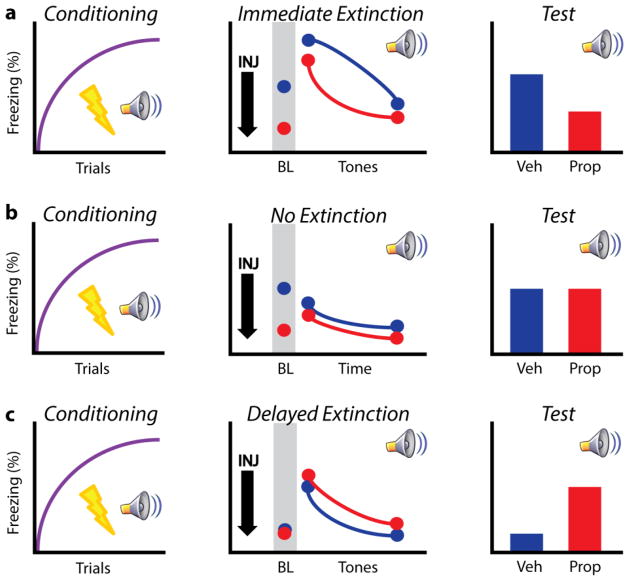Figure 2.
Schematic data showing the bi-directional effect of propranolol treatment on extinction learning at different time points. a) Animals are typically conditioned with several CS-US pairings (left). In an immediate extinction procedure, animals received either vehicle or propranolol 30 min prior to extinction training (and immediately after conditioning). Propranolol treatment reduced elevated baseline levels of freezing and attenuated fear throughout the session (middle). When tested for extinction recall later (in a drug free state), prior propranolol treatment significantly reduced the spontaneous recovery of fear, ameliorating the immediate extinction deficit (right). b) Similar to animals undergoing immediate extinction procedures, “no-extinction” controls received vehicle or propranolol immediately following conditioning, but were exposed to the extinction context in the absence of CS presentation. Propranolol reduced elevated levels of baseline freezing, although no difference was observed between groups throughout the session (middle). Upon test, animals froze at similarly high levels (right). c) In delayed extinction, animals were conditioned using the same protocol as in a and b. However, animals were returned to their home cage following conditioning and not injected. The following day, rats received vehicle or propranolol administration 30 min prior to an extinction session. No differences were observed at baseline or during tone presentation (middle). When tested for extinction recall (in a drug free state), prior propranolol treatment impaired retrieval relative to vehicle controls (right). Abbreviations as in Figure 1 legend. Data are adapted from Fitzgerald et al. (2015).

